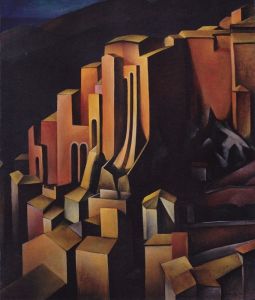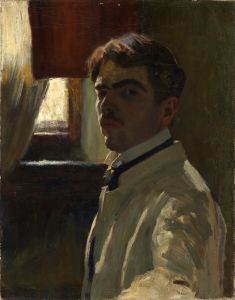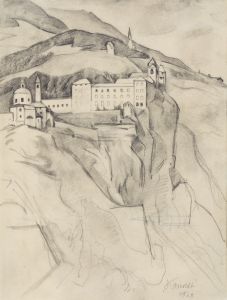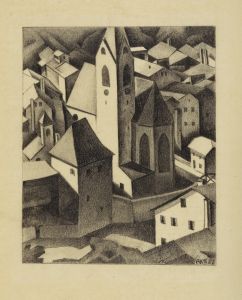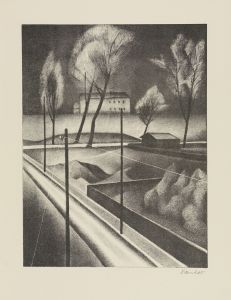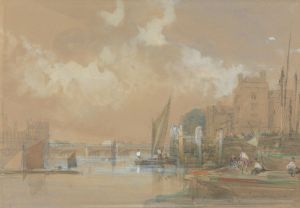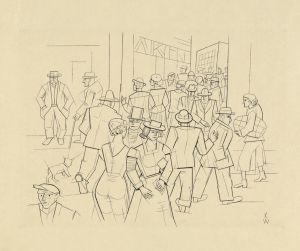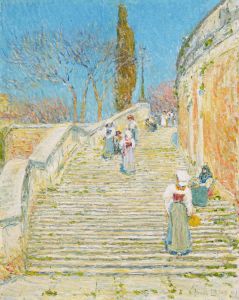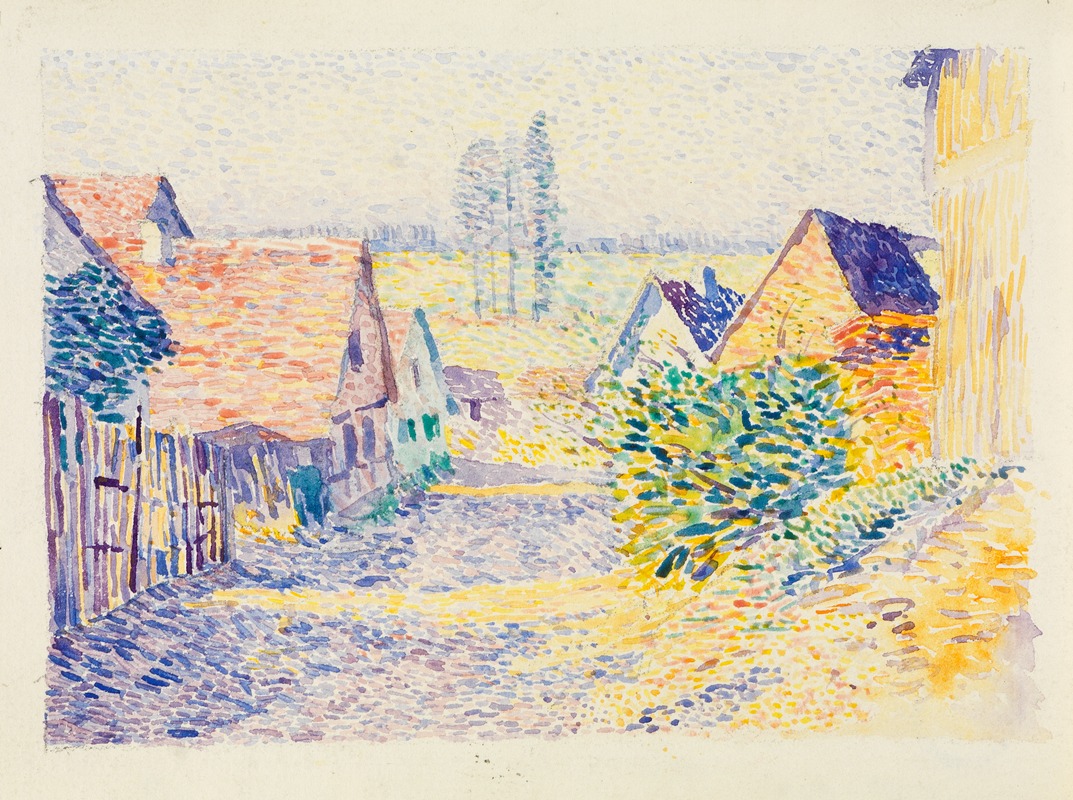
Dorfstraße in Leopoldshafen II
A hand-painted replica of Alexander Kanoldt’s masterpiece Dorfstraße in Leopoldshafen II, meticulously crafted by professional artists to capture the true essence of the original. Each piece is created with museum-quality canvas and rare mineral pigments, carefully painted by experienced artists with delicate brushstrokes and rich, layered colors to perfectly recreate the texture of the original artwork. Unlike machine-printed reproductions, this hand-painted version brings the painting to life, infused with the artist’s emotions and skill in every stroke. Whether for personal collection or home decoration, it instantly elevates the artistic atmosphere of any space.
"Dorfstraße in Leopoldshafen II" is a painting by the German artist Alexander Kanoldt, created in 1921. Kanoldt was a prominent figure in the New Objectivity (Neue Sachlichkeit) movement, which emerged in Germany in the aftermath of World War I. This movement was characterized by a realistic style of painting that often depicted everyday scenes with a sense of clarity and precision.
The painting "Dorfstraße in Leopoldshafen II" translates to "Village Street in Leopoldshafen II" in English. It portrays a quiet, almost deserted street in the village of Leopoldshafen, located in the Baden-Württemberg region of Germany. The composition of the painting is marked by its meticulous attention to detail and the use of clean, sharp lines, which are hallmarks of Kanoldt's style.
In "Dorfstraße in Leopoldshafen II," Kanoldt captures the essence of rural life in post-war Germany. The street is lined with simple, unadorned houses, and the overall atmosphere is one of calm and stillness. The painting reflects the New Objectivity movement's focus on depicting the world with a sense of detached observation, avoiding emotional or dramatic embellishments.
Kanoldt's use of color in this painting is restrained and muted, contributing to the serene and somewhat somber mood of the scene. The palette consists mainly of earthy tones, with shades of brown, gray, and green dominating the composition. This choice of colors enhances the realistic portrayal of the village street and underscores the simplicity of rural life.
Alexander Kanoldt was born in 1881 in Karlsruhe, Germany, and studied at the Academy of Fine Arts in Munich. He initially worked in a style influenced by Impressionism and Post-Impressionism but later became associated with the New Objectivity movement. Kanoldt's work often focused on landscapes, still lifes, and architectural scenes, characterized by their precise and clear depiction.
"Dorfstraße in Leopoldshafen II" is an excellent example of Kanoldt's mature style and his contribution to the New Objectivity movement. The painting is notable for its technical skill and the way it captures the quiet dignity of everyday life in a small German village. It reflects the broader cultural and artistic trends of the time, as artists sought to respond to the social and political upheavals of the early 20th century with a renewed focus on realism and objectivity.
Today, Alexander Kanoldt's works, including "Dorfstraße in Leopoldshafen II," are appreciated for their historical significance and their contribution to the development of modern art in Germany. The painting remains a testament to Kanoldt's ability to convey the beauty and simplicity of the world around him through his meticulous and disciplined approach to painting.





